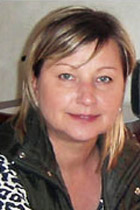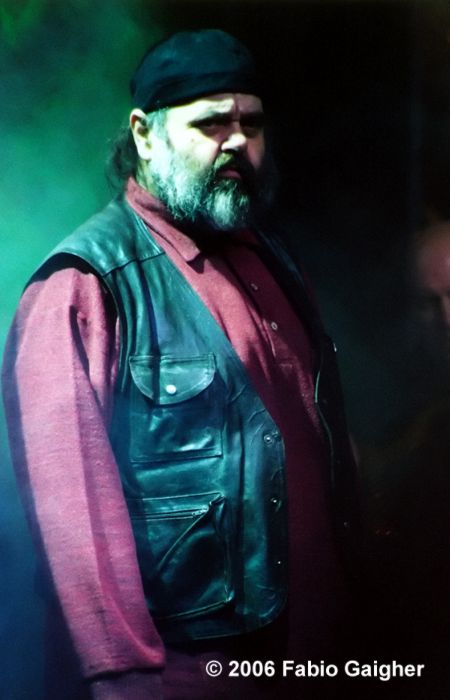
Nortia's attribute was a nail, which was driven into a wall within her temple at Volsinii annually to mark the New Year. At Bolsena, the most likely candidate for the new Volsinii, there is a ruin outside the Florence gate that is known locally as the Tempio di Norzia, but as George Dennis pointed out in the 19th century, no evidence other than the existence of the cult of Nortia supports this identification, and the architecture is Roman. The ancient location of Volsinii is vexed, and the Etruscan town was refounded by the Romans. May the spirit be vital for those things which, as arranged by the law of the fates, remain to be carried out.
#VILLA FIDELIA 2006 SERIAL#
Nortia, I venerate you, I who sprang from a Volsinian lar, living now at Rome, boosted by the honor of a doubled term as proconsul, crafting many poems, leading a guilt-free life, sound for my age, happy with my marriage to Placida and jubilant about our serial fecundity in offspring. The 4th-century writer and consul Avienus, who was from Nortia's seat in Volsinii, addressed the goddess in a devotional inscription: Ī name has been deciphered as possibly Nortia among those of other deities in an inscription found within an Umbrian sanctuary at the Villa Fidelia, Hispellum. Tertullian names Nortia twice in Christian polemic. She is mentioned in one of Juvenal's satires and identified with the Roman goddess Fortuna, and Martianus Capella lists her along with other goddesses of fate and chance such as Sors, Nemesis, and Tyche. She appears a few times in Latin literature and inscriptions.

Her name is not among those of the deities on the Liver of Piacenza.

My Love.Little or no Etruscan evidence for Nortia survives.

Deep Blue (2003-2007), a cycle of analog photographs and video pieces on the ocean, led her around the Iberian peninsula through the Pyrenees, from the Spanish to the Portuguese coast. To Friese, the camera at times is a scientific instrument: by using it to scan the outside world, she traces the counterparts to her inner images and pieces them together as in a mosaic.Ģ020/21 Großstadt Neukölln 1920-2020, Museum Neukölln, BerlinĢ017 Art and Science, GREMM, Tadoussac, CanadaĢ014 Artist in Residence, Schloss Werdenberg festival, SwitzerlandĢ013 The Musician, the Painter, the Designer and the One Who is Still Searching, NYC (documentary film, 45 min.)Ģ012 View York: Nine Perceptions, German-American Institute Tübingen and FreiburgĢ012 Perugia Social Photofest, Villa Fidelia, Spello, ItalyĢ011 View York: Nine Perceptions, ☌LAIRbyKahn, MunichĢ010 Mauerfälle EAST – Zu Protokoll / For the Record, FrankfurtĢ009 East for the record, Museum of Fine Art / Museum of Contemporary Art, LeipzigĢ009 Pavilhao 28, Espaco Expositivo do Centro Hospitalar Psiquiátrico, LisbonĢ009 Istanbul Next Wave, Akademie der Künste, BerlinĢ008 My grandmother. She makes connections and interrelations visible so that she and we who look at her work are part of it.įriese’s work is a quest through time and through the world. Friese’s portraits of people and places, which take the form of single images as well as series, photographic cycles and videos, are the result of her cautious approach to and persistent observation of the world. She learnt that pictures are not only taken with the camera but are absorbed by the photographer also – an experience that has influenced her world view ever since. She spent two years documenting crime scenes, postmortems, injuries, perpetrators and victims. But wasn’t it I who was looking, gazing at a young boy in a picture? I remembered then that I wanted to take photographs.įrom 1999 to 2001 Gundula Friese worked as a photographer for the State Office of Criminal Investigation in Berlin. He stood in the midst of a bleak cityscape, serenely looking into the camera. The image both confused and calmed me, in equal measure.

A portrait of a young boy led to a key moment: He was around eleven years old, the same age as I was then. Gundula Friese was drawn to photography early in life. Her work has been shown in numerous international exhibitions. Gundula Friese studied photography at the Academy of Visual Arts in Leipzig as well as sound and video design at the Berlin Academy of Digital Media.


 0 kommentar(er)
0 kommentar(er)
